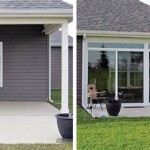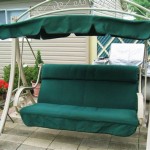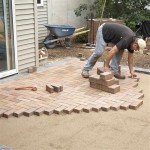Fire Sense Patio Heaters: Extending Outdoor Comfort
Fire Sense patio heaters have become a popular solution for extending the usability of outdoor spaces, particularly during cooler months. These heaters provide a localized source of warmth, allowing individuals to comfortably enjoy patios, decks, and other outdoor areas without being significantly impacted by lower temperatures. Fire Sense offers a range of models, each designed with specific features and benefits to cater to diverse needs and preferences. Understanding the various types, their operating principles, and safety considerations is crucial for selecting and using these heaters effectively.
The functionality of a Fire Sense patio heater centers around the combustion of propane or the use of electricity to generate heat. Propane models typically utilize a burner system that heats a metal emitter, radiating warmth outwards. Electric models employ heating elements that produce infrared heat, directly warming objects and people within their range. The design and construction of these heaters aim to maximize heat output and distribution while prioritizing safety and user convenience.
Types of Fire Sense Patio Heaters
Fire Sense offers a diverse range of patio heaters, each with unique characteristics that make them suitable for different applications. These types can be broadly categorized by their power source and design:
Propane Patio Heaters: These heaters are fueled by propane gas, typically stored in a tank located within the base of the unit. Propane heaters are known for their high heat output and portability, as they do not require a direct electrical connection. They are ideal for larger outdoor spaces where electrical outlets may be limited or unavailable. Common designs include mushroom-shaped heaters, featuring a wide reflector hood that directs heat downwards and outwards. These models often have adjustable heat settings, allowing users to customize the warmth according to their needs and the ambient temperature. Some propane models are equipped with safety features such as tip-over protection, which automatically shuts off the gas supply if the heater is accidentally knocked over.
Electric Patio Heaters: Electric patio heaters rely on electricity to generate heat. These heaters are typically smaller and more compact than propane models, making them suitable for smaller outdoor spaces like balconies or covered patios. Electric heaters are often mounted on walls or ceilings, providing a discreet and space-saving heating solution. They are generally considered to be more environmentally friendly than propane heaters, as they do not produce direct emissions. Electric heaters can utilize various heating technologies, including infrared heating, which directly warms objects and people without heating the surrounding air. Some electric models are equipped with remote controls and timers, offering convenient operation and energy-saving features.
Tabletop Patio Heaters: These are smaller, more portable versions of propane or electric heaters designed for placement on tables or other elevated surfaces. They are ideal for providing localized heat to a small group of people, making them suitable for outdoor dining or intimate gatherings. Tabletop heaters are often designed with aesthetic appeal in mind, blending seamlessly with outdoor furniture and decor. They typically feature safety features such as tip-over protection and automatic shut-off mechanisms.
Hanging Patio Heaters: These heaters are designed to be suspended from ceilings or other overhead structures. They are commonly used in covered patios, garages, or workshops. Hanging heaters provide efficient and space-saving heating, directing warmth downwards without taking up valuable floor space. They are often equipped with adjustable chains or brackets, allowing users to customize the height and angle of the heater. Hanging heaters are particularly useful in areas where floor space is limited or where a discreet heating solution is desired.
Each type of Fire Sense patio heater offers specific advantages, and the best choice depends on the intended use, the size of the outdoor space, and the available resources. Propane heaters provide high heat output and portability, while electric heaters offer convenience and environmental friendliness. Tabletop heaters provide localized warmth, while hanging heaters offer space-saving heating solutions.
Operational Aspects and Efficiency
The operational aspects of Fire Sense patio heaters vary depending on the type of heater. Propane heaters require a propane tank, typically a standard 20-pound tank, which needs to be refilled or replaced when empty. The heaters are usually ignited using a push-button ignition system, and the heat output can be adjusted using a control knob. Electric heaters, on the other hand, simply need to be plugged into a standard electrical outlet to operate. Some electric models offer multiple heat settings, allowing users to customize the warmth to their preference and the ambient temperature.
The efficiency of a patio heater is measured by its ability to convert fuel or electricity into usable heat. Propane heaters generally have a high heat output, but they also consume propane at a relatively fast rate, typically burning through a 20-pound tank in a few hours of continuous use. Electric heaters are generally more energy-efficient, as they convert a higher percentage of electricity into heat. However, their overall heat output may be lower than that of propane heaters, particularly for smaller models.
Factors that influence the efficiency of a patio heater include the design of the heater, the type of heating element used, and the ambient temperature. Heaters with reflectors and adjustable heat settings are typically more efficient, as they allow users to direct the heat and minimize energy waste. Regular maintenance, such as cleaning the burner or heating element, can also help to improve efficiency. The surrounding environment also plays a role; enclosed spaces will retain heat more effectively than open areas. Wind can significantly reduce the effectiveness of any patio heater, as it can carry away the generated heat.
To maximize the efficiency of a Fire Sense patio heater, it is recommended to use it in a sheltered area, such as a covered patio or deck. It is also important to choose the right size heater for the space, as using an oversized heater can lead to energy waste. Regular maintenance, such as cleaning the burner or heating element, can also help to improve efficiency and prolong the life of the heater. Furthermore, understanding the correlation between consumption and temperature allows for informed adjustments to heat settings, optimizing both comfort and energy usage.
Safety Considerations and Maintenance
Safety is a paramount concern when operating any type of heating appliance, including Fire Sense patio heaters. Both propane and electric heaters pose potential hazards if not used properly. Propane heaters, in particular, require careful handling due to the flammable nature of propane gas. Electric heaters, while generally safer, can still pose risks such as electrical shock or fire if not properly maintained.
Key safety considerations for propane patio heaters include ensuring proper ventilation to prevent carbon monoxide buildup, keeping flammable materials away from the heater, and inspecting the gas lines and connections for leaks. The heater should always be placed on a stable, level surface to prevent it from tipping over. It is also important to turn off the gas supply and allow the heater to cool down completely before moving or storing it. Regularly checking the hose and regulator for signs of wear or damage is critical to prevent leaks and potential fires. Avoid using the heater in enclosed spaces where carbon monoxide can accumulate to dangerous levels.
For electric patio heaters, it is important to use a properly grounded electrical outlet and to avoid overloading the circuit. The heater should be kept away from water and other liquids to prevent electrical shock. It is also important to inspect the power cord for damage and to avoid using an extension cord unless it is specifically rated for outdoor use. Regularly cleaning the heating element and reflector can help to prevent fire hazards. Never operate the heater with a damaged cord or plug, and always unplug the heater when not in use.
Regular maintenance is essential for ensuring the safe and efficient operation of Fire Sense patio heaters. For propane heaters, this includes cleaning the burner and pilot light, inspecting the gas lines and connections, and checking the reflector for damage. For electric heaters, it includes cleaning the heating element and reflector, inspecting the power cord, and checking for any signs of electrical damage. Always follow the manufacturer's instructions for maintenance and repair. Storing the heater properly during the off-season, such as in a dry and protected location, can also help to prolong its lifespan.
Adhering to safety guidelines and performing routine maintenance are vital for the longevity and secure operation of Fire Sense patio heaters. Careful attention to these aspects will minimize risks and ensure continued enjoyment of outdoor spaces.

Patio Fire Sense Stainless Steel Black Commercial Heater

Fire Sense 46 000 Btu Gas Patio Heater 63010 The Home Depot

Best Buy Fire Sense Patio Heater Espresso 62785

Patio Fire Sense Hammer Tone Broe Commercial Heater

Fingerhut Fire Sense All Weather Wicker Patio Heater

Fire Sense Performance Series 46 000 Btu Steel Ash And Stainless Patio Heater 63715 The Home Depot

New Fire Sense 46 000 Btu Patio Heater Mocha In Hand Ready To Ship Now

Fire Sense Stainless Steel Commercial Patio Heater

Fire Sense All Weather Wicker Patio Heater Com

Patio Fire Sense Stainless Steel Deluxe Heater








